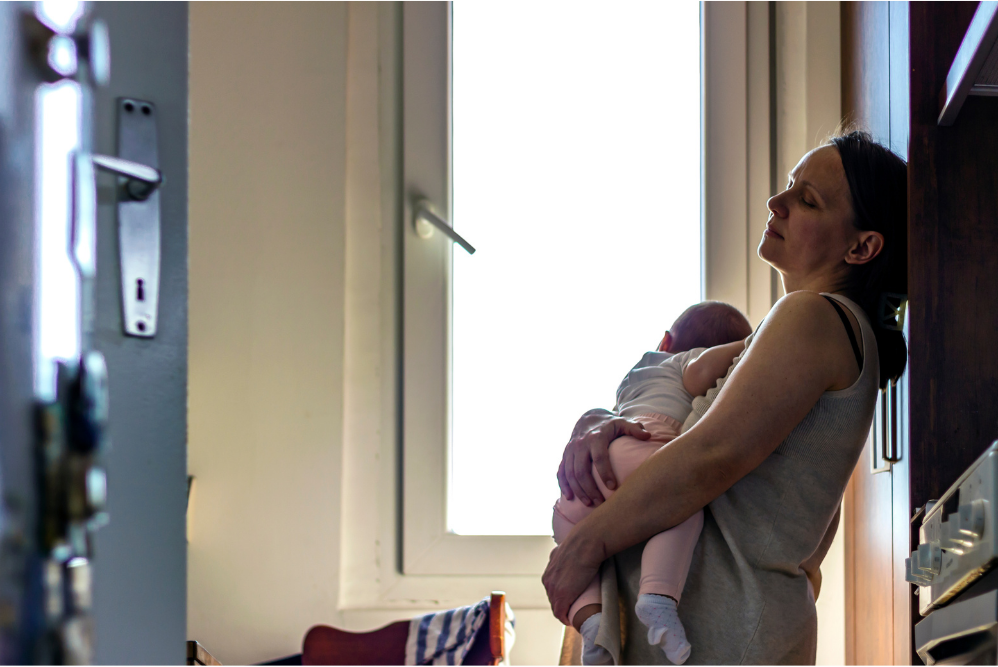For many thousands of Victorian parents, Saturday afternoon was spent contacting bosses, rearranging calendars and sending each other stress-face emojis. I know, because I was one of them. With childcare centres in the ACT also largely closed, and parents in NSW being urged to re-consider their childcare needs, this is an experience becoming all too familiar to parents around the country.
The closure of childcare centres to most children will mean some brutal trade-offs for families. And while I, like many others, may suffer some sleep deprivation in the short term, the real risk is that those with the least capacity to adapt – especially single parents – will be the ones who will bear the long-term scars.
The average child in long day care attends for about 30 hours per week. Most are there because their parents are working during those hours. Parents working full-time may be accessing 40 or more hours of care a week to manage their workload.
As every parent – or casual acquaintance of a parent – knows, caring for young children is a full-time job. It’s not something you do ‘on the side’ while participating in a Zoom meeting or responding to emails.
This means many families are needing to find an extra 30, 40 or even 50 hours in their week to care for their children. That’s a big ask for anyone, but parents with young children already have the highest workload – paid and unpaid hours – of any group, clocking in at an average of 80 hours a week.
If parents maintain the same paid workload, the only way they can make the equation balance is by significantly cutting into their already limited leisure time – or by sleeping less.

Danielle Wood argues that for many women the situation is worse, because care usually isn’t shared equally. Picture: By Jelena Stanojkovic
The ‘only 24 hours in a day’ reality is currently biting in my own house: my partner and I have a 5-year-old daughter and we both work full-time. If we share care equally, and I maintain my work hours, I can expect to ‘enjoy’ four hours of sleep a night.
For many women it’s worse, because care usually isn’t shared equally.
During last year’s lockdowns, we saw both mothers and fathers shouldering a big increase in unpaid hours thanks to remote learning and childcare closures. But mothers took on more of the extra care, on top of an already higher load.
For single parents, who often have no capacity to share additional care, the reality is even more brutal.
Given workarounds such as using leave – if there’s any available – or cutting sleep can’t be sustained forever, long lockdowns risk locking in more permanent choices.
And again it’s women’s paid work that is most likely to be sacrificed. Studies of lockdown time-use in a range of developed countries showed that the average woman with children cut back hours of paid work, while fathers maintained theirs. A 2020 US McKinsey survey suggested that 17 per cent of women with children under 10 were considering downshifting their careers, and 23 per cent were considering leaving the workforce altogether. These were significantly higher rates than for fathers, or for women without children.
During last year’s lockdowns in Australia, mothers – but particularly single parents – left the workforce in droves, with workforce participation down by 10 per cent for single mothers, and 3 per cent for mothers in parenting couples. Workforce participation for fathers was unchanged.
Decisions made to cope with the rise in the care load can have long-tail effects. Reduced participation in the paid workforce reduces immediate income, but also impacts a worker’s future earnings trajectory. The longer lockdowns persist the more likely we will see these ‘scarring’ effects for mothers. And any reduction in paid work will further widen the already gaping $2 million difference in lifetime earnings between men and women with children.
We all have a stake in minimising these costs. Here are some things that could help:
- First, employers should find ways to help reduce the stress on their employees. Flexibility and reduced output expectations should be the default and actively extended to fathers, as well as mothers.
- Second, state governments should extend essential worker status to single parents. We cannot keep asking an already vulnerable group to give up work every time we have a lockdown.
- Finally, we need a mechanism to circumvent wholesale school and childcare closures, while protecting children’s health. Rapid antigen testing is being used elsewhere to control spread in schools. We should investigate how we can roll out in schools and childcare as a matter of urgency.
Parents with young children, particularly mothers, are currently taking one for ‘Team Australia’. We owe it to them to recognise the challenges they’re facing and do what we can to help them make it through. The alternative is to see gender equality set back by a decade.
Danielle Wood is the CEO of Grattan Institute and also leads Grattan’s Budgets and Government Program. She has published extensively on economic reform priorities, budgets, tax reform, generational inequality, and reforming political institutions. Danielle previously worked at the Australian Competition and Consumer Commission, NERA Economic Consulting, and the Productivity Commission.





